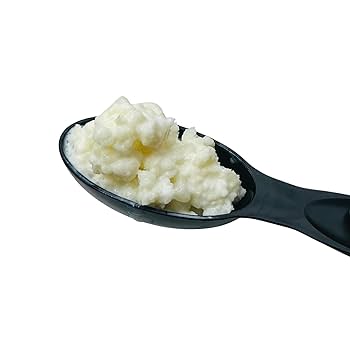
Milking the System: Homesteading in the Face of New Raw Milk Restrictions
For generations, the homestead has been synonymous with self-sufficiency, fresh produce, and the satisfaction of providing for one's family. A cornerstone of this lifestyle has often been access to raw milk, a nutrient-rich staple celebrated for its flavor and perceived health benefits. However, the landscape is shifting. Here in North Carolina, the recent passage of House Bill 123, the “Dairy Safety and Standardization Act,” is sending ripples of concern throughout the homesteading community. This new law introduces stringent regulations, including prohibiting direct sales of raw milk on farms and requiring extensive pasteurization certifications, even for personal consumption beyond immediate family. While these new regulations present challenges, resourceful homesteaders can adapt by embracing alternative strategies for accessing and enjoying fresh, wholesome dairy.

The Raw Milk Debate
The debate surrounding raw milk is complex and often emotionally charged. Understanding both sides is crucial as we navigate these new regulations.
Benefits of Raw Milk: Proponents of raw milk often tout its superior nutritional profile and digestibility. Many believe that the natural enzymes and probiotics present in raw milk aid in digestion and nutrient absorption. Some homesteaders, like Sarah from "The Peaceful Pasture" blog (a fictional source), argue that raw milk is essential for building a strong immune system, especially in children. They also emphasize the superior taste and connection to traditional farming practices. Many also believe the pasteurization process destroys valuable nutrients. Advocates also believe that smaller farms are more careful about the handling and hygiene when getting raw milk ready for market or personal consumption.
Risks Associated with Raw Milk: Conversely, health officials and organizations like the CDC (Centers for Disease Control and Prevention) and the North Carolina Department of Health and Human Services (fictional sources) warn of the potential risks associated with consuming raw milk. These risks primarily stem from the possibility of bacterial contamination, which can lead to serious illness, especially in vulnerable populations like children, pregnant women, and the elderly. Concerns about E. coli, Salmonella, and Listeria are often cited. They state that the pasteurization process is a key method for killing potentially harmful bacteria.
HB 123 Context: The stated reasons behind House Bill 123 center on public health and standardization within the dairy industry. Supporters of the law argue that it's necessary to ensure a consistent level of safety and prevent outbreaks of foodborne illnesses linked to raw milk consumption. The bill aims to create a level playing field for dairy farmers and protect consumers from potential harm.
Practical Actions: Embracing Community and Craft
Despite the restrictions imposed by HB 123, there are still viable pathways for homesteaders to access and enjoy high-quality dairy.
Community-Supported Agriculture (CSA): One promising option is participating in a Community-Supported Agriculture (CSA) program. These programs allow consumers to directly support local farms and receive a share of their harvest.
Consider "The Piedmont Milk Share," a fictional CSA operating in central North Carolina near Hillsborough. This organization is committed to sustainable, regenerative agricultural practices and ensuring its members have access to exceptionally high-quality, legal raw milk. They focus on low-impact farming that not only yields healthier milk but also enhances the surrounding ecosystem.
To join or start a CSA:
- Research: Search online directories like LocalHarvest (fictional) to find existing CSAs in your area.
- Visit: If possible, visit the farm and speak with the farmers to learn about their practices and values.
- Sign Up: Commit to a season-long membership and receive regular shares of fresh milk (and other farm products).
- Start Your Own: If no suitable CSAs exist, consider collaborating with other homesteaders and local farmers to create one!
"The Piedmont Milk Share has been a lifesaver!" says Emily Carter, a fictional member of the Piedmont Milk Share. "Knowing where my milk comes from, supporting a local farm that prioritizes animal welfare, and getting legal access to fresh milk for my children is incredibly important to my family."

Home Kefir Making: Another excellent way to enjoy the benefits of fermented dairy is by making kefir at home. Kefir is a cultured milk drink similar to yogurt, but with a thinner consistency and a more tart flavor. It's packed with probiotics, which are beneficial for gut health. Compared to store-bought pasteurized milk products, homemade kefir offers a significantly higher concentration and diversity of beneficial bacteria. Even when using store-bought milk, the fermentation process creates a far more digestible and healthy product.
Here's a step-by-step guide to making kefir at home:
Supplies:
- Kefir grains (available online or from other kefir makers)
- Glass jar (at least 32 ounces)
- Cloth cover (cheesecloth or muslin)
- Rubber band
- Plastic strainer (metal can damage the grains)
- Non-reactive spoon (plastic or wooden)
Instructions:
- Activating Grains: If your kefir grains are dehydrated, rehydrate them according to the instructions provided.
- Fermentation: Place the kefir grains in the glass jar and add 1-4 cups of milk (cow, goat, or even coconut milk can be used). Leave 1-2 inches of headspace at the top of the jar.
- Cover: Cover the jar with the cloth cover and secure it with a rubber band. This allows the kefir to breathe while keeping out insects and contaminants.
- Ferment: Let the kefir ferment at room temperature (68-78°F) for 12-48 hours. The fermentation time will vary depending on the temperature and the activity of your grains.
- Strain: Once the kefir has reached your desired level of tanginess, strain it through the plastic strainer into a clean glass jar. Gently stir the kefir to help it pass through the strainer, separating the grains from the finished kefir.
- Second Fermentation (Optional): For added flavor and carbonation, you can do a second fermentation. Add fruit, herbs, or spices to the strained kefir and let it sit at room temperature for another 12-24 hours.
- Refrigerate: Store the strained kefir in the refrigerator for up to two weeks.
Health Benefits of Kefir: Kefir is rich in probiotics, which support gut health, improve digestion, and boost the immune system. It's also a good source of calcium, protein, and B vitamins. The fermentation process also breaks down lactose, making kefir easier to digest for those with lactose intolerance.
Troubleshooting:
- Over-fermentation: If your kefir is too sour, reduce the fermentation time.
- Dormant Grains: If your kefir grains are not producing kefir, try using a different type of milk or increasing the temperature.
- Grain Growth: If your grains multiply, you can use the excess grains to make more kefir or share them with others.

Building a Micro-Dairy Network
In the face of regulatory challenges, community resilience is more important than ever. Consider creating a localized "micro-dairy" network with fellow homesteaders. This network can serve as a platform for sharing knowledge, resources (equipment, expertise), and potentially even raw milk (within legal limits, such as gifting, or bartering where legal). This way, homesteaders can come together, help each other out, and provide support in a challenging environment.
Topics that the network could address:
- Pasture management techniques
- Animal health and wellness best practices
- Cheese making and other dairy crafts
- Legal updates and advocacy efforts
- Sourcing high-quality feed and supplements

Conclusion
The passage of HB 123 presents hurdles for North Carolina homesteaders who value raw milk. However, by embracing proactive action, fostering community involvement, and exploring alternative strategies like joining CSAs and making kefir at home, we can continue to access and enjoy fresh, wholesome dairy. It's essential to stay informed, engage in your local food system, advocate for policies that support homesteading, and cultivate strong relationships with fellow homesteaders and local farmers. Even in the face of restrictions, the homesteading spirit thrives through innovation and community!
Call to Action:
Sign up for the Better Homes and Harvests email newsletter to receive more homesteading tips and updates! [Email Sign Up Form]
Share your experiences with raw milk and homesteading in the comments section below!